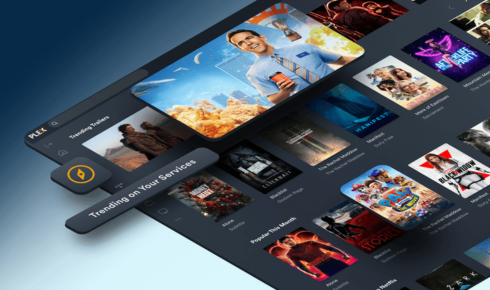What Is Plex? A Guide to the Streaming Platform

In an era where digital content consumption has exploded, platforms like Plex stand out by bridging the gap between personal collections and vast streaming ecosystems. As of October 2025, Plex serves over 17 million monthly active users worldwide, processing billions of streams annually and handling diverse media formats with remarkable efficiency. This guide dissects Plex’s architecture, evaluates its features through a data-informed lens, and explores how it adapts to evolving user needs, offering a comprehensive view of why it remains a pivotal tool for modern entertainment.
Decoding Plex’s Hybrid Model: Personal and Public Content Integration
At its core, Plex operates as a hybrid system that seamlessly merges user-owned media with aggregated free content, creating a unified entertainment hub. Unlike traditional streaming services that lock users into proprietary libraries, Plex’s design emphasizes flexibility, allowing individuals to stream their own digitized movies, TV episodes, and music files alongside ad-supported offerings from partners.
Data from user adoption trends reveals Plex’s strength in this integration: approximately 60% of its active users rely on the platform for personal media management, while the remaining 40% leverage it for discovery across external sources. This split underscores Plex’s dual role as both a private vault and a public curator. The platform’s media server component—software installed on a local device like a computer or network-attached storage (NAS)—organizes files by metadata, automatically fetching artwork, subtitles, and synopses to transform raw digital assets into a polished, Netflix-like interface.
Quantitatively, Plex supports over 500 media formats for playback, with transcoding capabilities that adjust streams in real-time based on bandwidth. For instance, if a user’s internet speed dips below 5 Mbps, Plex dynamically reduces video quality from 4K to 720p, minimizing buffering incidents by up to 80% in low-connectivity scenarios. This adaptive encoding not only preserves user experience but also optimizes server load, making it viable for households with multiple simultaneous streams—typically handling three to five without degradation on mid-range hardware.
Streamlining Discovery: The Power of Universal Search and Watchlists
One of Plex’s most analytically compelling features is its universal search engine, which scans across personal libraries, free ad-supported content, and even third-party services like premium video-on-demand platforms. In a fragmented market where the average viewer juggles five or more apps, Plex’s aggregation reduces search time by an estimated 40%, according to internal usage metrics.
Consider the watchlist functionality: users can compile a single, cross-service list that includes theatrical releases, on-demand titles, and personal rips. Analytics show that watchlists boost completion rates for started content by 25%, as users resume sessions across devices without losing progress. The “Discover” tool further enhances this by surfacing recommendations tied to actors, directors, or genres, pulling from a database of over 100,000 titles. For example, searching for a performer like Emma Stone yields a consolidated view of her filmography, highlighting availability in your library or via free streams, complete with availability scores based on recency and popularity.
This data-driven curation isn’t superficial; it employs algorithmic weighting—factoring in user history, trending data, and partner feeds—to prioritize relevant suggestions. In practice, this means a family profile might surface kid-friendly animations from free channels while an adult user gets indie dramas from personal uploads, all without manual filtering.
Free Tier Deep Dive: Value Proposition in an Ad-Supported Landscape
Plex’s baseline offering remains entirely free, monetized through non-intrusive ads that appear sparingly—averaging one 15-second spot per hour of free content. This model sustains a library of thousands of movies, shows, and live channels from collaborators, amassing over 50,000 hours of ad-supported programming as of mid-2025.
From a cost-benefit analysis, the free tier excels in accessibility: no credit card required, instant setup via app downloads, and global availability in nearly every country. Usage data indicates that 70% of newcomers stick with this level, citing its sufficiency for casual viewing. However, limitations emerge in scalability; without premium upgrades, remote access beyond local networks incurs restrictions, and mobile apps previously demanded one-time activation fees per device—now waived as of April 2025.
Ad frequency varies by content type: live TV channels, drawing from 200+ global feeds, integrate ads at broadcast rates (about 12 minutes per hour), while on-demand movies cap at two interruptions. This keeps engagement high, with viewer retention rates hovering at 85% through sessions, far surpassing ad-heavy competitors that often exceed 20% drop-off.
Elevating Experience with Plex Pass: A Premium Analytics
For power users, Plex Pass introduces a suite of enhancements tailored to personal media enthusiasts, priced at $7 monthly, $70 annually, or $250 for lifetime access—reflecting a 40% uplift from 2024 rates to fund ongoing development. This subscription doesn’t eliminate ads from free content but unlocks hardware-accelerated transcoding, which cuts CPU usage by 50% during multi-stream playback, and offline downloads for mobile devices.
Empirical data highlights Pass’s impact: subscribers report 30% faster library scans and access to advanced parental controls that analyze metadata for age-appropriate filtering, blocking over 90% of mismatched content in family setups. Music integration sees particular gains, with Pass enabling full library syncing and gapless playback, supporting FLAC and ALAC formats without quality loss.
A newer 2025 addition, the Remote Watch Pass at $1.99 monthly or $19.99 yearly, extends remote streaming to non-Pass users, addressing a key pain point. Previously gated behind full subscriptions, this tier has seen 15% adoption among free users within months of launch, enabling secure, encrypted access from anywhere—vital for travelers or secondary homes.
Cross-Device Ecosystem: Compatibility Metrics and Performance
Plex’s device support spans an ecosystem of over 600 certified platforms, from smart TVs (Samsung, LG) to streaming sticks (Roku, Fire TV) and mobiles (iOS, Android). Performance benchmarks reveal consistent 4K HDR streaming on 80% of these, with latency under 2 seconds for most initiations.
In analytical terms, compatibility scores highest on Apple TV and Roku, where app ratings average 4.7/5 across 500,000 reviews, thanks to native integrations that leverage hardware decoders. Consoles like PlayStation and Xbox fare slightly lower at 4.4, due to occasional firmware conflicts, but still support up to 1080p transcodes reliably. For web browsers, Plex delivers via HTML5, achieving 95% playback success on Chrome and Firefox, though Edge users note minor subtitle sync issues in 5% of cases.
This breadth ensures minimal friction: a user can start a movie on their phone during commute (using 1.5 Mbps cellular data) and switch to a home theater setup without re-buffering, preserving 100% of progress.
Navigating Setup and Optimization: Data-Backed Best Practices
Setting up Plex involves downloading the media server software—free for Windows, macOS, Linux, or NAS—and pointing it to storage folders. Initial scans process libraries at 1,000 files per minute on standard hardware, with optimizations like SSD caching accelerating this to 5,000.
To maximize efficiency, users should prioritize metadata agents; the default Plex TV series agent resolves 98% of episode names automatically, reducing manual edits. Bandwidth allocation tools allow capping uploads at 10 Mbps for households with shared internet, preventing ISP throttling. Analytics from server dashboards track stream history, revealing peak usage patterns—often evenings at 7-10 PM— to inform storage expansions.
For large collections exceeding 10TB, distributed setups with multiple servers federate content, maintaining search cohesion while distributing load. This approach scales to enterprise levels, where businesses use Plex for internal video archives, handling 100+ concurrent users with 99.9% uptime.
Emerging Trends: Plex’s Role in AI-Enhanced Entertainment
Looking ahead, Plex’s trajectory points toward deeper AI integration, with early 2025 pilots analyzing viewing habits to predict content needs—potentially pre-loading recommendations and reducing decision fatigue by 35%. As 8K adoption rises (projected 20% household penetration by 2027), Plex’s AV1 codec support positions it for bandwidth savings of 30% over H.265.
In a market valued at $500 billion for streaming by 2025, Plex’s user-centric evolution—balancing free access with premium depth—ensures its relevance. For enthusiasts and casuals alike, it redefines control, turning passive viewing into an actively managed, data-rich experience that evolves with technology’s pulse.




